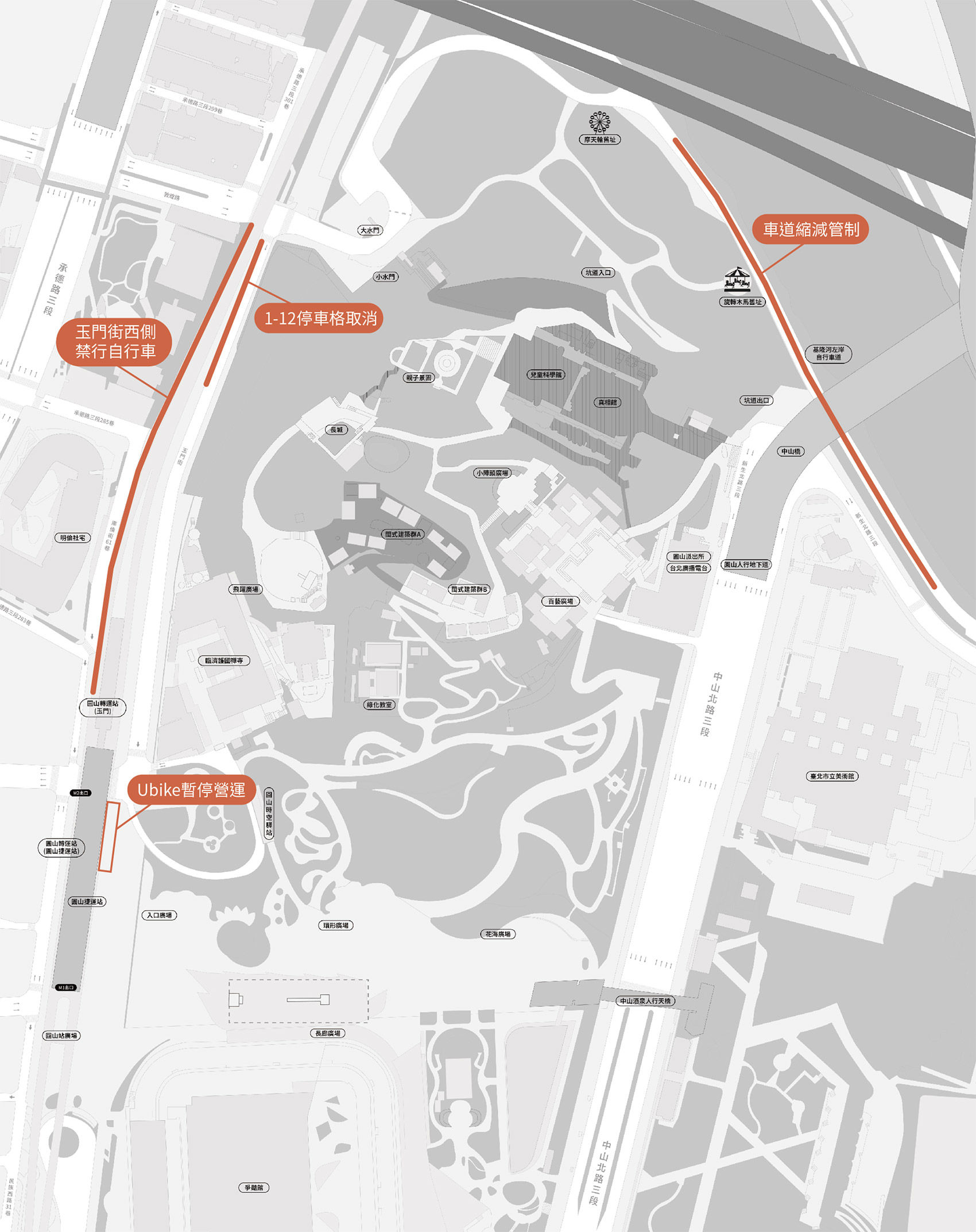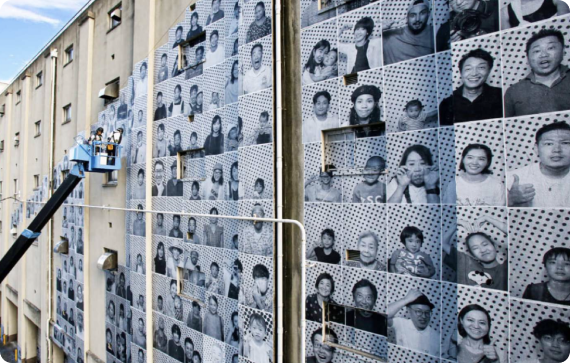被遺忘的盡頭 At the Edge of What We Recall
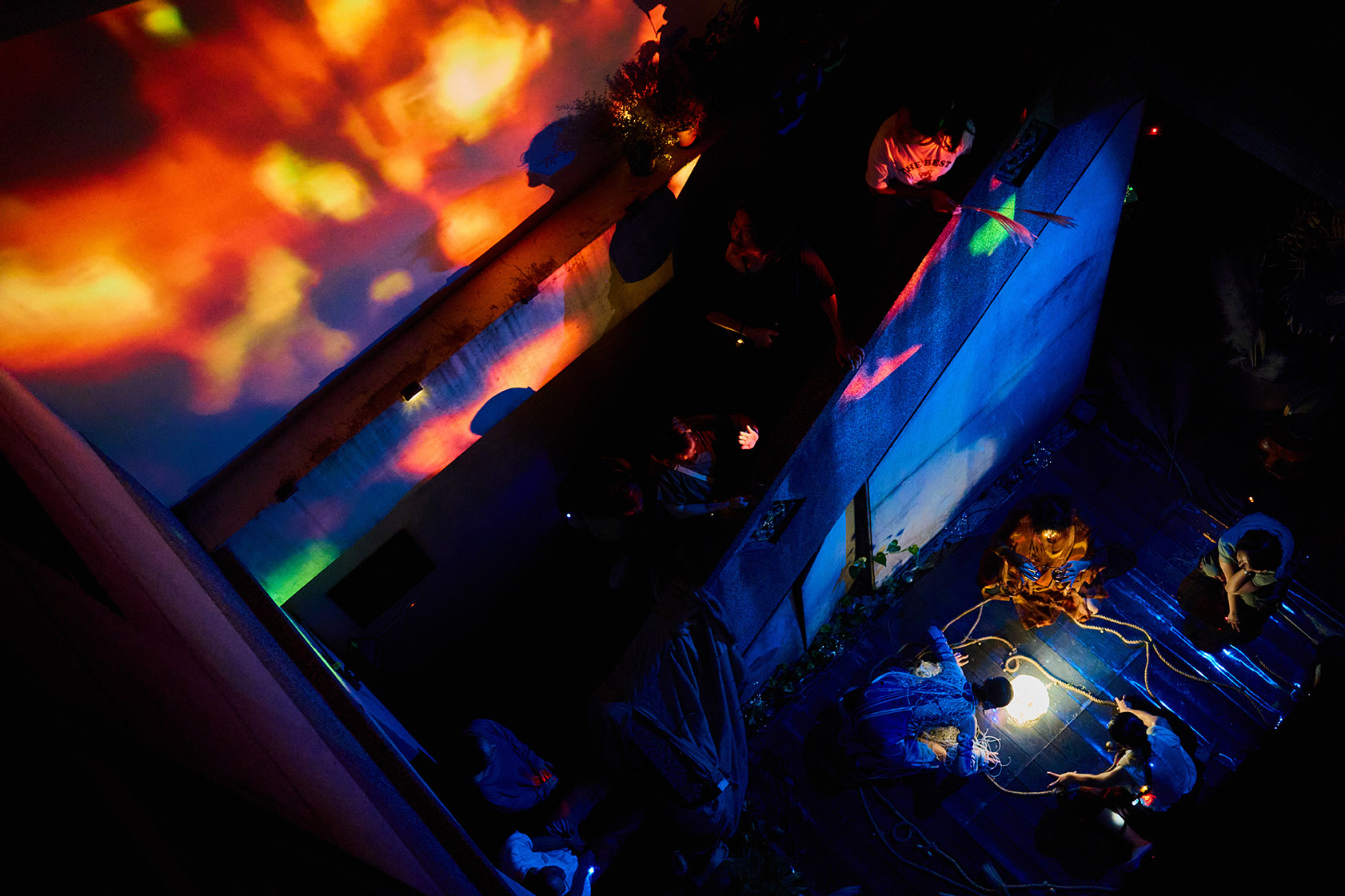
A08.「花蟲弄」番外篇 —《蛹塚》
Entomofloral Chronicles – "Cocoon Tomb"
人米犬頁製作 / Pudgala Body & Sound Production
關於作品
About this project
「花蟲弄」番外篇 —《蛹塚》
—花蟲世界的遺跡脈動,時間的蛻變層—
時間在地層間沉降,留下碎片般的軀殼與殘響。
如昆蟲蜷伏於蛹殼之中,過往的一切並未消失,
只是靜待風化,靜待裂解,靜待下一次甦醒。
花蟲世界的遺跡,如同堆疊的文化層,
昆蟲的蛻變,是歷史在身體上的拓印。
生命曾在此繁衍、遷徙、殞落,
留下斑駁的痕跡,成為塵埃中的靜默語言。
當一座遺塚開始震盪,
埋藏於地層的記憶,是否已悄然啟動?
我們所行走的土地,
是否也是一層尚未發掘的蛹殼?
▌震盪的開始,遺跡如何發聲?
時間並非靜止,而是透過行動、聲響、軀殼的殘片持續滲透。
當身體與遺跡交錯,歷史便開始移動。
聲音在石縫間流動,如古老語言的回聲;
纏結的結構鬆開又緊繃,像歷史的纖維被拉扯、重組;
步伐輕觸地面,灰塵微微顫動,時間開始改變形狀。
遺塚內的軀殼是否仍帶著溫度?
在這座場域裡,無需發掘,
歷史早已滲入身體,
時間正透過我們的行為書寫新的紋理。
▌裝置藝術亮點|纖維雕塑燈《巢》
本次演出特別結合康力升藝術家的纖維雕塑燈裝置作品《巢》。此作品由【地衣荒物 Earthing Way】創辦人謝欣翰引薦合作,成為花蟲世界持續進化的重要元素。
康力升長期探索纖維與空間媒材的可能性,擅長以植物、手抄紙、金屬與燈光創作具生命感的裝置作品。《巢》以傳統手抄紙技法編織鐵絲網狀結構,潑灑楮皮纖維漿,逐層形成細胞般薄膜,透出神秘微光,彷彿未知生物的繭或蛹,傳達生命初始的氛圍,展現原始有機的空間美學。
地衣荒物 Earthing Way 以推廣台灣當代工藝與土地文化為理念,集結本土工藝作品、生活選品與藝文活動,長期致力於串聯藝術與場域,讓物件與裝置不僅被看見,更成為人與土地、文化之間的連結。
在《蛹塚》中,這顆纖維雕塑燈不只是光源,它象徵時間裡微光的甦醒,像遺跡中持續滲透的囈語,將「花蟲世界」的異境與「圓山」這片歷史場域無聲連結在一起。
Entomofloral Chronicles – Cocoon Tomb
— The pulse of ancient ruins in the world of Entomoflorals; time, layered in metamorphosis —
Time settles deep within the earth,
leaving behind husks—fragments, echoes that linger.
Like insects curled inside their cocoons,
the past has not vanished—
only waits:
to weather,
to split,
to wake once more.
The ruins of the Entomofloral world lie like strata of culture,
each layer a trace of life—once born, migrating, falling away.
Insect metamorphosis marks history upon the body,
a blurred imprint of what once was.
What remains is mottled, half-erased—
a silent language written in dust.
And when a burial mound begins to tremble,
are the memories beneath our feet beginning, quietly, to stir?
Might the ground we walk upon
also be a cocoon, still waiting to be revealed?
▌The Beginning of Tremor — How Do Ruins Speak?
Time does not hold still.
It seeps through movement, through sound, through the scattered fragments
of shells.
Where body and ruin intersect, history begins to shift.
Sound slips through stone fissures—
a murmuring echo of ancient tongues.
Knotted structures loosen, then pull taut again,
like threads of history being tugged and rewoven.
Footsteps graze the ground—
dust stirs, and time begins to take new shape.
Do the shells within the tomb still carry warmth?
Here, excavation is not required.
History has already entered the body.
Time, through our movements, is tracing new textures—
writing itself anew.
▌Installation Highlight|Fiber Sculpture Lamp Nest
As part of this performance, artist Kang Li-Sheng’s fiber sculpture lamp Nest is featured as a key installation. Introduced through a collaboration initiated by Hsieh Hsin-Han, founder of Earthing Way, the work has become integral to the ongoing evolution of the Entomofloral world.
Kang Li-Sheng has long explored the potential of fiber and spatial materials, creating installations that resonate with an organic sense of life. Working with elements such as plants, handmade paper, metal, and light, his practice blurs the boundary between the crafted and the living. Nest is constructed using traditional papermaking techniques—wire mesh serves as the base, layered with splashed mulberry fiber pulp.
The result is a structure of translucent, cell-like membranes that emit a subtle,
mysterious glow, evoking the cocoon or chrysalis of an unknown lifeform. It conjures an atmosphere of primordial beginnings, presenting a spatial aesthetic rooted in raw, organic form.
Earthing Way is a platform dedicated to promoting contemporary Taiwanese craft and land-based culture. Through curated works by local artisans, lifestyle objects, and cultural events, it fosters meaningful connections between art and place—where objects and installations become points of contact among people, land, and tradition.
Within Cocoon Tomb, the fiber sculpture lamp functions not merely as a source oflight, but as a metaphor for the awakening glow of time. Like whispers filtering through ancient ruins, it quietly bridges the surreal world of Entomoflorals with the historically resonant landscape of Yuanshan.
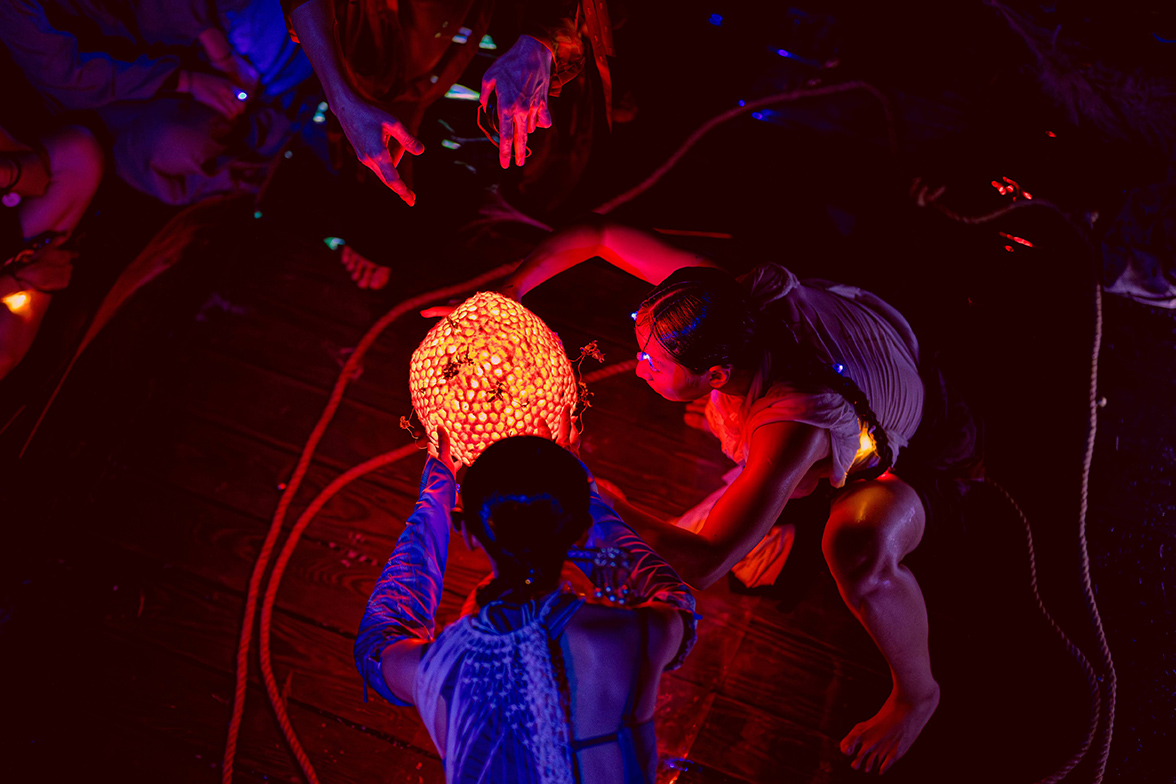
攝影師|郭光原

攝影師|黃裕閔
Artist
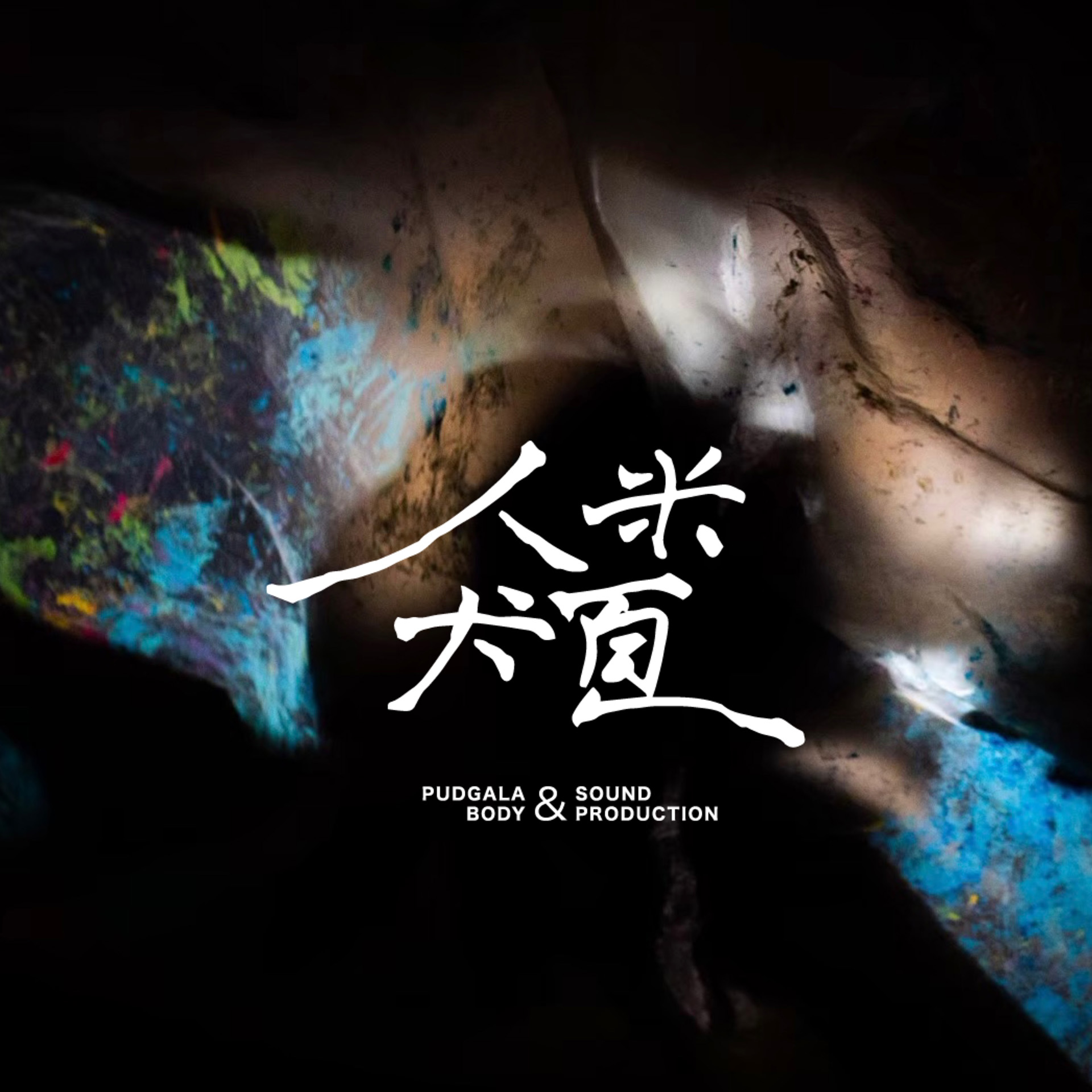
人米犬頁製作/
Pudgala Body & Sound Production臺灣 / Taiwan
人米犬頁製作成立於2020年,以原創舞作《虎刺梅》首次亮相,並於2024年正式立案。團隊以舞蹈為核心,融合聲音、即興表演與多元藝術形式,持續探索身體語言的流動與感知。
「人米犬頁」一名源自「人類」兩字的拆解:人為行動的起點,米象徵滋養,犬代表感官與本能,頁則為頭顱與意識。創作即是以這個交織著自然、糧食、動物與精神的身體為學習器,與世界展開深層對話。
我們根植於自然與歷史場域,透過身體與空間的共振,因地制宜、就地取材,建立沉浸式的感知經驗。創作關注傳統與當代之間的轉譯,並從儀式結構與動態冥想實踐中,發展出獨特的美學語彙,探索時間、空間與存在的微妙節奏。
Pudgala Body & Sound Production was established in 2020, debuting with the
original dance piece dance, the collective integrates sound, improvisation, and diverse artistic forms to continuously explore the fluidity and perception of bodily language.
The name “Ren Mi Quan Ye” (人米犬頁) comes from a deconstruction of the
Mandarin word for “human” (人類): Ren (人) signifies the beginning of action, Mi (米) represents nourishment, Quan (犬) stands for the senses and instinct, and Ye (頁) symbolizes the head and consciousness. Through this body—woven from nature, sustenance, animality, and spirit—creation becomes a tool for deep dialogue with the world.
Rooted in natural and historically resonant environments, the collective works site-specifically, crafting immersive sensory experiences through the resonance between body and space. Drawing from local materials and responding to each location, their creative process centers on translating between tradition and contemporaneity.
Through ritual structures and dynamic meditative practices, Pudgala has developed a distinct aesthetic language that examines the subtle rhythms of time, space, and existence.
